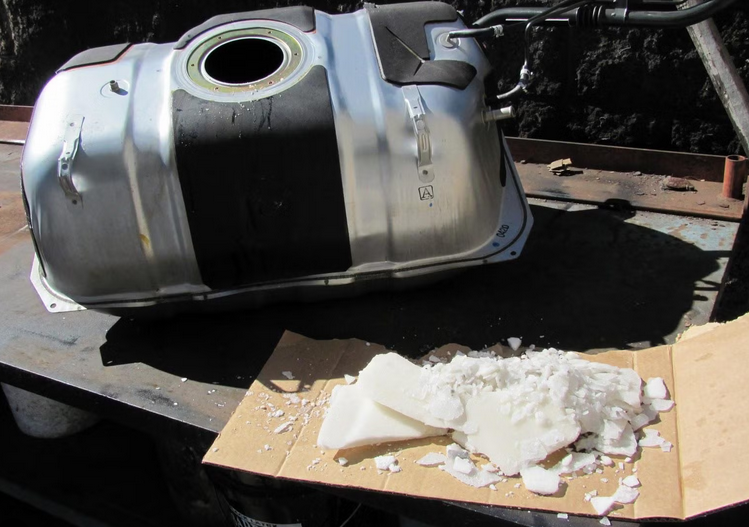Repair instructions
Have Sugar In Your Gas Tank? Here’s What to Do
Overview:
Contrary to popular belief, sugar doesn’t dissolve in gasoline. If someone intentionally adds sugar to your fuel tank, it won’t caramelize inside the engine. Instead, the sugar will simply settle at the bottom of your tank. While it won’t directly harm your engine, it can clog the fuel system, particularly the fuel filter and injectors, leading to performance issues. Removing sugar from your gas tank typically requires draining, cleaning, and replacing components like the fuel filter, fuel pump assembly, and fuel lines.

1. What Happens If Sugar Gets in Your Gas Tank
Sugar does not dissolve in gasoline due to the difference in their molecular structures. Instead, it will sink to the bottom of the tank. In most cases, the sugar won’t make its way into the fuel pump right away because the fuel system’s pickup screen filters out larger particles. However, if sugar manages to get past the filter, it can cause serious clogging in the injectors, especially if it’s powdered sugar, which is small enough to pass through.
Potential Issues:
- Clogged fuel filter
- Clogged fuel injectors
- Poor engine performance, stalling, or difficulty starting
While sugar won’t immediately damage your engine, if it makes it into the injectors, there could be some caramelization under high heat.
2. How to Fix Sugar in Your Gas Tank
To resolve this issue, you’ll need to carefully clean and inspect the fuel system. Here’s a step-by-step guide to removing sugar from your fuel tank:
2.1 Raise the Vehicle
Start by lifting the vehicle securely with a jack, then support it with jack stands. Disconnect the battery to prevent any sparks that could ignite fuel vapors.
2.2 Drain the Fuel Tank
If the tank is still full, carefully drain the fuel into a container. A full tank is heavy, and if not supported properly, it could cause injury or damage.
2.3 Access the Fuel Tank
Consult your owner’s manual for instructions on accessing the fuel tank. In some vehicles, you can reach the fuel pump by removing the rear seat or accessing the tank through the trunk.
2.4 Disconnect the Fuel Filler Hose
Disconnect the plastic filler hose from the tank. This can require a specialized tool for certain models. Also, disconnect any pressure sensor lines or return lines that are attached to the tank.
2.5 Disconnect the Filler Tube Hose and Remove Fuel Tank Straps
The fuel filler neck is usually attached to the tank with bolts or clamps. Once everything is disconnected, remove the fuel tank straps that hold it in place. Be cautious as the tank may be heavy, especially when full.
2.6 Remove the Fuel Pump
To fully access the tank, you’ll need to remove the fuel pump assembly. Do not use any flame-based tools to inspect the tank as this can cause an explosion. Always use a flashlight or LED light.
2.7 Drain the Fuel Tank (Again)
Once the fuel tank is detached, tilt it to drain any remaining fuel. Use a towel to soak up any leftover fuel residue.
2.8 Rinse the Tank
Use a pressure washer or high-pressure hose to thoroughly clean the inside of the tank. Sugar can settle in hard-to-reach areas, so this step is crucial to remove all the sugar. Dry the tank completely once cleaned.
2.9 Flush the Fuel Line
Disconnect the fuel lines and flush them with a hose to remove any remaining sugar. Afterward, flush the lines with denatured alcohol to help evaporate any remaining water. Repeat as necessary.
2.10 Replace the Fuel Filter and Pump Assembly
In cases where the fuel filter is integrated with the fuel pump assembly, you’ll need to replace the entire unit. Some vehicles require replacement of the entire fuel pump assembly if contamination is suspected.
2.11 Clean the Fuel Lines and Fuel Rail
Disconnect the fuel lines from the engine and use compressed air to blow out any contaminants. Rinse the lines with isopropyl alcohol, followed by another round of compressed air to clear out any remaining fluid. Do the same for the fuel rail.
Pro Tip:
Often, you may not realize there’s sugar in your gas tank until you notice performance issues like stalling or rough acceleration. If a mechanic suspects sugar contamination, they’ll need to inspect the tank, which involves dropping it to check for any buildup inside.
By following these steps, you can remove sugar from your gas tank and restore your vehicle’s fuel system to proper working order. Don’t skip any steps, and always ensure that everything is cleaned and replaced as needed. This will help prevent long-term damage and costly repairs.
